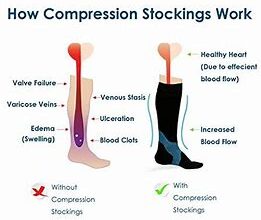During childhood, it is crucial to educate and develop a child’s optimal posture and prevent future consequences of poor posture. Both parents and teachers play a key role in promoting and maintaining healthy backs and proper posture in children. One of the most effective tools to achieve this is through practicing yoga.
Yoga is a holistic approach that strengthens the body while improving mental and physical well-being. By practicing yoga, children learn breathing exercises and body awareness, which helps them appear more confident and self-assured. Yoga exercises distribute oxygen and nutrients to the spine and joints, promoting improved blood flow and preventing the undue strain on the back.
Having ergonomic furniture is also essential for promoting a healthy back and proper posture in children. Adjustable chairs and desks that are at the right height, along with flat and firm cushions, ensure that the child’s body is properly aligned. This prevents rounded shoulders and maintains the natural curvature of the spine, thus preventing future back problems.
Early prevention is key to avoiding future consequences. Parents and teachers should encourage children to engage in a variety of activities that strengthen the back and promote good posture. These activities can include exercises that target the core muscles, such as planks and back extensions, as well as standing tall and sitting with both feet flat on the floor.
It is important to teach children how to engage their core muscles and maintain good posture while engaged in everyday activities. Educating them on the proper way to lift heavy objects, carry backpacks, and sit for long periods of time can greatly reduce the strain on the back and prevent future problems.
By promoting healthy backs and proper posture in children, parents and teachers are providing them with the tools they need to lead a more confident and self-assured life. Maintaining good posture not only prevents future back problems but also allows for optimal body function and prevents unnecessary pain and discomfort.
Implementing these tips and exercises in a child’s routine from an early age can greatly improve their overall health and well-being. By instilling good posture habits early on, parents and teachers are ensuring that children develop strong and healthy backs, which will benefit them throughout their lives.
Importance of Correct Posture for Children
Having correct posture is important for children because it plays a crucial role in their overall health and well-being. It helps them to maintain a healthy spine, prevent back problems, and improve their overall physique. Correct posture can be achieved through various activities such as yoga, proper diet, and core-strengthening exercises.
Yoga can help children improve their posture by encouraging them to engage their core muscles and maintain a proper body alignment. It promotes flexibility and helps children to develop a balanced and well-rounded back. Regular yoga practice can also reduce the risk of developing chronic back problems such as scoliosis.
In addition to yoga, maintaining a supportive diet is also essential for good posture. A diet rich in nutrients helps to support the musculoskeletal system and promotes better overall function. It is important to encourage children to eat a balanced diet with high-quality protein, whole grains, and plenty of fruits and vegetables.
Another way to promote correct posture in children is by setting up an ergonomic and adjustable workstation. Whether they are studying or using a computer, it is important to provide them with a chair and desk that allow for proper alignment of the spine, shoulders, and joints. The proper positioning of the elbows and the use of an adjustable chair can help prevent hunching and keep the spine in a neutral position.
Encouraging regular physical activity is also important for maintaining good posture. Engaging in a variety of activities such as sports, dancing, and playing outdoors helps to strengthen the muscles that support the spine and improve posture. Physical activity promotes blood flow and helps to stretch and strengthen the muscles and joints, contributing to better posture.
Correct posture not only benefits children physically but also has cognitive benefits. Good posture allows for better oxygen supply to the brain, which can improve focus, concentration, and overall cognitive function. It also helps with proper digestion and can reduce the risk of digestive issues in children.
By taking steps to promote correct posture in children, parents and caregivers can help them develop healthy habits that will benefit them throughout their lives. Proper posture is a natural and easy way to prevent back problems and promote overall health and well-being. Using the tools of yoga, diet, core exercises, and encouraging physical activity can all contribute to better posture in children.
The impact of proper posture on a child’s health and development
Proper posture has a significant impact on a child’s health and development. Maintaining good posture helps children develop a positive self-image and feel self-assured in their physical appearance. Additionally, proper posture plays a crucial role in the skeletal development of a child, ensuring that their bones grow and align evenly.
One of the key benefits of maintaining proper posture is the prevention of spinal abnormalities. By keeping the spine in its optimal position, the child’s body supports the weight evenly, leading to lower chances of developing poor posture-related discomfort and pain in the future. Engaging in exercises and practices that promote proper posture from an early age can significantly reduce the risk of skeletal abnormalities and related issues.
Parents can help their child in developing and maintaining proper posture by setting a good example and promoting healthy habits. Encourage your child to sit up with their shoulders back and their feet firmly on the floor while studying or engaging in screen time. Provide them with a supportive chair or cushion and ensure that they have a comfortable and ergonomic workspace.
Using a backpack with proper straps is also essential for promoting good posture and preventing back pain. The backpack should be worn with both straps on the shoulders and adjusted to sit comfortably on the child’s lumbar region. This helps distribute the weight evenly and reduces the strain on the spine, contributing to optimal spinal alignment.
Regular exercise and physical activity are crucial for the overall development and growth of a child. Encourage your child to engage in activities that strengthen their muscles, promote flexibility, and improve posture. Simple exercises, such as yoga or stretching routines, can help strengthen the core muscles that support proper posture.
In conclusion, proper posture plays a vital role in a child’s health and development. It contributes to optimal skeletal growth, reduces the risk of spinal abnormalities, and improves circulation and oxygen flow throughout the body. By promoting and maintaining good posture through regular exercises and healthy habits, parents can help their children avoid discomfort and future postural problems, ensuring their overall well-being.
Benefits of Good Posture

Good posture has many positive effects on the overall development of children. It can lead to a self-assured and confident image, making it easier for them to engage in social interactions and handle difficult situations. When children maintain good posture, it allows for optimal skeletal development by keeping the back and spine in proper alignment. This can reduce the risk of future back pain and strain.
One of the key benefits of good posture is the prevention of poor habits, such as hunching or slouching. By standing or sitting with their shoulders back, hips aligned, and knees slightly bent, children can reduce the strain on their muscles and joints. This can promote better circulation, improve digestion, and reduce the risk of developing scoliosis.
In addition to physical benefits, good posture also plays a role in the mental and emotional well-being of children. When children stand tall and relaxed, it can give them a sense of confidence and self-esteem. This improved self-image can translate into improved performance in school and other daily routines.
Proper posture also allows for proper growth and height development, especially during the early years. When children maintain good posture, it helps to make their skeletal structure strong and healthy, reducing the risk of flat feet and other postural issues. Good posture can also have a positive impact on a child’s overall future health, as it can prevent the development of chronic back pain and other related conditions.
To promote good posture, it is important to provide children with the necessary tools and routines. Encouraging them to sit up straight, adjust their desks and chairs to the appropriate height, and use backpacks with properly adjusted straps can all help prevent poor posture. Engaging in regular posture exercises and stretches for a few minutes every day can also promote good posture and reduce the risk of developing future back problems.
In conclusion, good posture brings numerous benefits to young children, both physically and mentally. It improves their overall development and potential, prevents the risk of future back pain, and promotes a healthy and self-assured image. By promoting and encouraging good posture in children from an early age, we can help them develop healthy postural habits that will benefit them throughout their lives.
Consequences of Poor Posture
Poor posture is an important issue that children can have, especially when they develop bad habits early in life. It can lead to a variety of problems, including discomfort, strain, and an increased risk of spinal and musculoskeletal issues. When children have poor posture, it not only affects their physical appearance but also their overall health and well-being.
One consequence of poor posture is the impact it can have on the musculoskeletal system. Leaning or hunching forward too much can strain the muscles and ligaments in the neck, shoulders, and back. This can result in pain and discomfort, making it difficult for children to engage in regular activities such as playing sports or participating in physical routines. It can also affect their core strength and stability, leading to problems with balance and coordination.
Poor posture can also contribute to breathing difficulties. When the spine is not properly aligned, it can compress the diaphragm and restrict lung expansion. This can impact the flow of oxygen to the brain and other vital organs, leading to decreased energy levels and difficulty concentrating. It can also have a negative impact on mental health, as children may feel self-conscious or less self-assured due to their poor posture.
Parents play an important role in educating their children about the importance of good posture and promoting healthy habits. By encouraging regular exercise and physical activity, parents can help improve core strength and stability, which in turn improves posture. Activities such as yoga or adjustable standing desks can help children develop proper alignment and spinal posture. Parents should also be mindful of their own posture habits, as children often imitate their parents’ behavior.
In conclusion, poor posture can have a significant impact on children’s health and well-being, both physically and mentally. It is important for parents to educate their children about the consequences of poor posture and promote routines and habits that support proper spinal alignment. By taking proactive steps early on, parents can help their children develop healthy postural habits and improve their overall quality of life.
How to Correct Posture
Proper posture allows the skeletal system to move and function as it should, reducing strain on the back and promoting overall health. When children have rounded or slouched shoulders, it not only affects their image but can also lead to future back pain and other issues. Teaching children proper posture is crucial for their development.
Here are some steps that parents can take to promote proper posture:
- Educate children about the benefits of good posture and the risks of poor posture, including chronic pain and skeletal strain.
- Teach children the correct way to sit, with their back flat against a supportive chair and their feet flat on the floor.
- Show children how to align their shoulders, hips, and ears to maintain a straight posture.
- Encourage children to practice sitting up straight every day, both at school and at home.
- Provide tools such as ergonomic chairs or back support straps to help children maintain proper posture.
- Adjust workstations and desks to the appropriate height for children, ensuring that their elbows are at a 90-degree angle and their eyes are level with the screen or book they are using.
- Remind children to avoid slouching or hunching their shoulders.
- Set a routine for breaks and stretching exercises to help children relieve any tension in their back and promote circulation.
- Develop a routine that includes physical activities that strengthen the core and back muscles.
- Encourage children to practice good posture during all activities, including walking, standing, and playing sports.
By consistently practicing good posture, children can reduce the risk of developing future back problems and improve their overall health and well-being. Proper posture not only supports a healthy back, but it also promotes good circulation, proper digestion, and a self-assured image. Parents can play a crucial role in teaching and promoting proper posture, making it an important part of their child’s daily routine.
Recommendations for Maintaining Proper Posture

Proper posture is essential for the overall health and well-being of children. Here are some recommendations to help children maintain good posture:
- Ensure that children sit with their lower back against a supportive chair, which provides proper lumbar support. This helps distribute their body weight evenly and reduces the risk of developing poor posture.
- Teach children to sit up straight, with their shoulders relaxed and their elbows bent at a 90-degree angle. This will help them maintain a good sitting posture, especially when studying or using electronic devices.
- Encourage children to take breaks from sitting or using electronic devices every 30 minutes. They can stretch, walk around, or do some simple exercises to relax their muscles and adjust their posture.
- Ensure that children’s computer screens or electronic devices are adjusted to eye level. This helps prevent them from hunching over and straining their neck and back.
- Educate children about the importance of a balanced diet that provides the necessary nutrients for proper growth and development. Good nutrition contributes to healthy bones, muscles, and the overall functions of the body, including the musculoskeletal system.
- Encourage children to engage in physical activities, such as yoga, which can improve flexibility, strength, and posture. Yoga poses like the mountain pose and the cobra pose can help align the spine and promote good posture.
- Teach children how to properly wear and adjust their backpacks. The backpack should be worn with both shoulder straps and positioned at the proper height, with the weight evenly distributed. Wearing a heavy backpack on one shoulder or too low can cause strain on the back and lead to poor posture.
- Provide a supportive and ergonomic chair and desk for children to use when studying or doing homework. This helps promote good posture and reduces the risk of developing back pain or fatigue.
- Encourage children to sleep on a firm, flat mattress and avoid sleeping on their stomach. Sleeping on the back or side with a pillow that supports the natural curve of the neck and spine is the best sleeping position for maintaining proper posture.
By following these recommendations, parents and educators can help children develop and maintain proper posture, which has long-term benefits for their physical and cognitive growth, self-esteem, and overall health.
Ergonomic Furniture and Tools
Proper ergonomic furniture and tools play a crucial role in promoting healthy backs and proper posture in children. Ensuring that children have the right skeletal position while sitting or engaging in any other activity is essential for maintaining good posture and preventing musculoskeletal problems in the future.
One important piece of ergonomic furniture is an adjustable chair or desk. Having the right height and depth of the chair and desk allows children to sit with their feet flat on the floor and their knees at a 90-degree angle. This helps distribute the weight evenly and reduces the risk of lower back strain.
An adjustable chair also ensures that the child’s back is properly supported, with the backrest positioned at the curve of the lower back. This promotes better posture and prevents slouching. Additionally, having a chair with armrests provides support for the child’s arms and shoulders, reducing strain on these areas.
Another essential tool for promoting proper posture is an adjustable screen or monitor. Having the screen at eye level helps prevent neck and eye strain, as well as promoting a more relaxed posture. Placing the screen at the correct height also allows for better engagement with the activities and reduces the risk of poor postural habits.
Backpacks and bags are other important tools to consider. Choosing a backpack with adjustable straps and a padded back provides better support for the child’s spine and distributes the weight evenly. Carrying heavy backpacks improperly can lead to back pain and other spinal problems. Parents should make sure that their children are wearing their backpacks properly, using both straps and adjusting them to fit comfortably.
In addition to ergonomic furniture and tools, engaging in regular exercise can help strengthen the core muscles and promote better posture. Simple activities like stretching and taking breaks from sitting can also help reduce the risk of postural problems. Encouraging children to engage in physical activity and maintaining a healthy lifestyle can have long-term benefits for their back and overall musculoskeletal health.
By using ergonomic furniture and tools and promoting healthy habits, parents can ensure that their children’s backs are properly supported and positioned. This will not only reduce the risk of immediate problems, such as back pain and strain, but also promote proper growth and function of the spine and other joints in the long run.
Healthy Habits and Daily Routines

When it comes to promoting a healthy back and proper posture in children, developing healthy habits and daily routines is essential. These habits and routines not only contribute to their overall physical health, but also play a vital role in their cognitive development.
One important habit is sitting correctly. When children sit for long periods of time with poor posture, it can lead to spinal problems and discomfort. Engaging in activities that promote optimal posture, such as sitting up straight with their shoulders back and their feet flat on the floor, ensures that the spine is properly aligned and the weight is evenly distributed.
Another important habit is engaging in a variety of physical activities. Regular exercise not only improves overall health, but also helps to strengthen the back and core muscles. Participating in sports and playing outdoors provides children with the opportunity to move their bodies and prevents them from being sedentary for extended periods of time.
Standing routines are also beneficial for promoting a healthy back and proper posture. Encouraging children to stand rather than sit for certain activities, such as doing homework or playing video games, helps to prevent them from developing rounded shoulders and a slouched posture. Providing them with supportive and adjustable furniture, such as a standing desk or a chair with proper back support, can further enhance their posture when standing.
It is important to start promoting healthy habits and routines early on. By doing so, children develop self-assuredness and confidence in their physical abilities. This not only improves their overall posture, but also plays a significant role in their brain development. Engaging in proper posture and physical activities ensures that the brain receives a sufficient supply of oxygen and nutrients, which is essential for optimal cognitive function.
In summary, promoting healthy habits and daily routines has numerous benefits for children. It contributes to their overall physical health, prevents the development of spinal problems, and improves cognitive function. Encouraging proper sitting and standing routines, as well as engaging in a variety of physical activities, is vital for maintaining a healthy back and proper posture.



